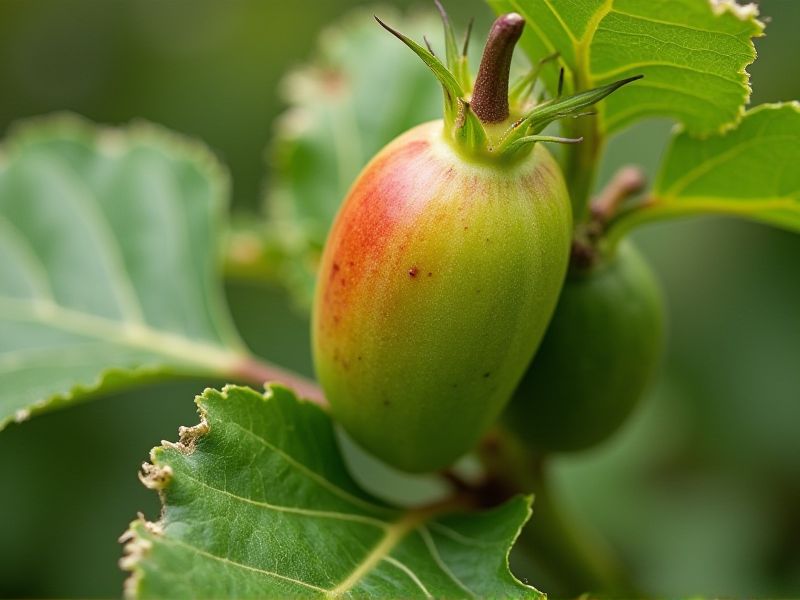
Fruiting plants that tolerate drought include varieties such as figs, pomegranates, and certain types of cactus, which thrive in arid conditions while still producing edible fruits. These resilient species possess deep root systems that access groundwater, allowing them to endure prolonged dry spells. Drought-resistant fruits, like dates and olives, not only offer delicious flavors but also contribute to sustainable gardening practices by requiring less water. In your garden, consider cultivating these hardy plants to reduce water usage without sacrificing fruit production. Embracing xeriscaping techniques can enhance the growth of these drought-tolerant species, creating a vibrant and low-maintenance landscape.
List of some Fruiting plants that tolerate drought
- Pomegranate (Punica granatum)
- Olive (Olea europaea)
- Fig (Ficus carica)
- Date Palm (Phoenix dactylifera)
- Jujube (Ziziphus jujuba)
- Grapevine (Vitis vinifera)
- Prickly Pear (Opuntia spp.)
- Almond (Prunus dulcis)
- Carob (Ceratonia siliqua)
- Loquat (Eriobotrya japonica)
Important things about Fruiting plants that tolerate drought
Water-Efficient Root Systems
Fruiting plants with water-efficient root systems, such as pomegranates and figs, are ideal for arid environments where drought resistance is crucial. These plants have deep, extensive roots that enable them to tap into underground moisture, maximizing water uptake during dry periods. Implementing mulching techniques around these species can further enhance water retention in the soil, protecting the roots from extreme heat. By selecting drought-tolerant fruiting plants, you can cultivate a resilient garden that thrives even in challenging conditions.
Drought-Resistant Varieties
Fruiting plants that exhibit drought resistance include species like pomegranates, figs, and certain varieties of olives, which are well-adapted to arid conditions. These plants possess deep root systems and specialized leaf structures that reduce water loss, allowing them to thrive in low-water environments. By selecting drought-tolerant fruiting plants for your garden, you can cultivate a sustainable landscape that requires significantly less irrigation. Incorporating such varieties not only conserves water but also promotes biodiversity and enhances soil health.
Mulching Benefits
Mulching around drought-tolerant fruiting plants provides critical moisture retention, helping to regulate soil temperature and reduce evaporation. Organic materials such as straw, wood chips, or compost create a nutrient-rich barrier that enhances soil fertility over time. This practice not only prevents weed growth but also improves soil structure, allowing roots to access water more efficiently. By incorporating mulch, you can significantly boost the resilience and productivity of your fruiting plants, ensuring they thrive even in dry conditions.
Optimal Planting Times
Fruiting plants that tolerate drought, such as pomegranates, figs, and certain varieties of blackberries, thrive best when planted in the early spring or fall, allowing them to establish strong root systems. These plants excel in well-drained soil and benefit from mulching, which helps retain soil moisture while controlling weeds. Choosing drought-resistant varieties not only minimizes water usage but can also enhance fruit yield during periods of low rainfall. Implementing proper irrigation techniques, like drip systems, can further optimize growth and fruit production during dry spells.
Soil Moisture Retention
Fruiting plants that tolerate drought, such as certain varieties of fig and pomegranate, thrive in soil with excellent moisture retention properties. These plants generally benefit from mulching, which helps maintain soil moisture and reduce evaporation rates. You can enhance soil moisture retention by incorporating organic matter, like compost, which improves soil structure and increases its water-holding capacity. Understanding the root depth of these drought-tolerant species can further optimize irrigation practices, ensuring that water reaches the plant roots effectively.
Pruning For Air Circulation
Pruning is essential for enhancing air circulation in fruiting plants, particularly those that tolerate drought conditions like fig, pomegranate, and olive trees. By selectively removing excess branches, you promote airflow throughout the canopy, reducing humidity that can lead to fungal diseases. This practice also encourages better light penetration, helping to maximize photosynthesis and fruit production. Regular pruning fosters a healthier plant structure, making it more resilient against drought and ensuring a more abundant harvest.
Companion Plant Advantages
Companion planting with drought-tolerant fruiting plants can significantly enhance your garden's resilience and yield. For example, pairing tomatoes with basil not only maximizes space but also improves flavor while boosting disease resistance. Incorporating native drought-resistant species like prickly pear or pomegranate creates a sustainable environment that conserves water and promotes biodiversity. By selecting the right combinations, you can ensure that your fruiting plants thrive even under water-scarce conditions, benefiting both your harvest and local ecosystems.
Use Of Organic Fertilizers
Organic fertilizers enhance the growth and yield of drought-tolerant fruiting plants, such as figs and pomegranate, by improving soil structure and microbial activity. Incorporating compost or well-rotted manure into the soil increases its moisture retention capacity, which is crucial in arid conditions. These natural amendments not only provide essential nutrients but also promote healthier root systems, allowing plants to access water more efficiently. By choosing organic fertilizers, you support sustainable agriculture while optimizing the vitality and fruit production of your drought-tolerant garden.
Pest And Disease Resilience
Fruiting plants such as pomegranates, olives, and figs exhibit remarkable resilience to pests and diseases while thriving in drought conditions. These species have adapted over time to survive with minimal water, thanks to their deep root systems and waxy leaves that reduce moisture loss. Implementing organic pest management strategies, like introducing beneficial insects or using neem oil, can further enhance their health and yield. By choosing drought-tolerant varieties, you can cultivate a sustainable garden that not only produces fruit but also withstands challenging environmental conditions.
Seasonal Harvesting Strategies
Fruiting plants that tolerate drought, such as pomegranates, figs, and certain varieties of olives, exhibit remarkable adaptations to arid conditions. These plants often develop deep root systems, allowing them to access groundwater and survive prolonged dry spells. Implementing seasonal harvesting strategies can optimize yield, ensuring that you collect fruits at peak ripeness while reducing stress on the plants during hot months. Techniques like timed irrigation, mulching, and planting cover crops can further enhance the resilience of these drought-tolerant species, creating a sustainable approach to fruit production even in challenging climates.
